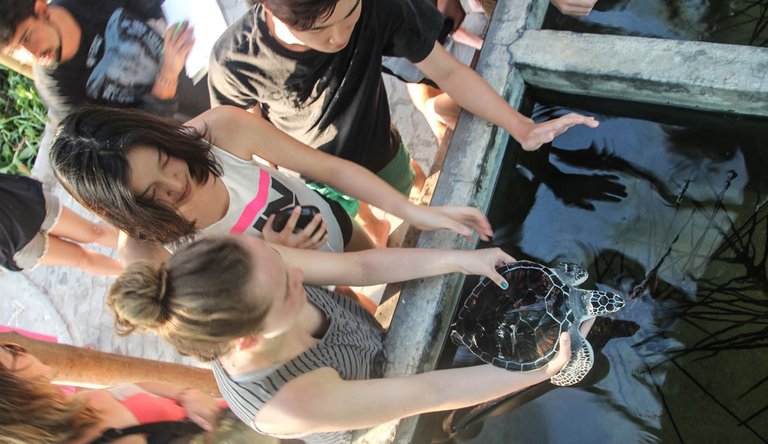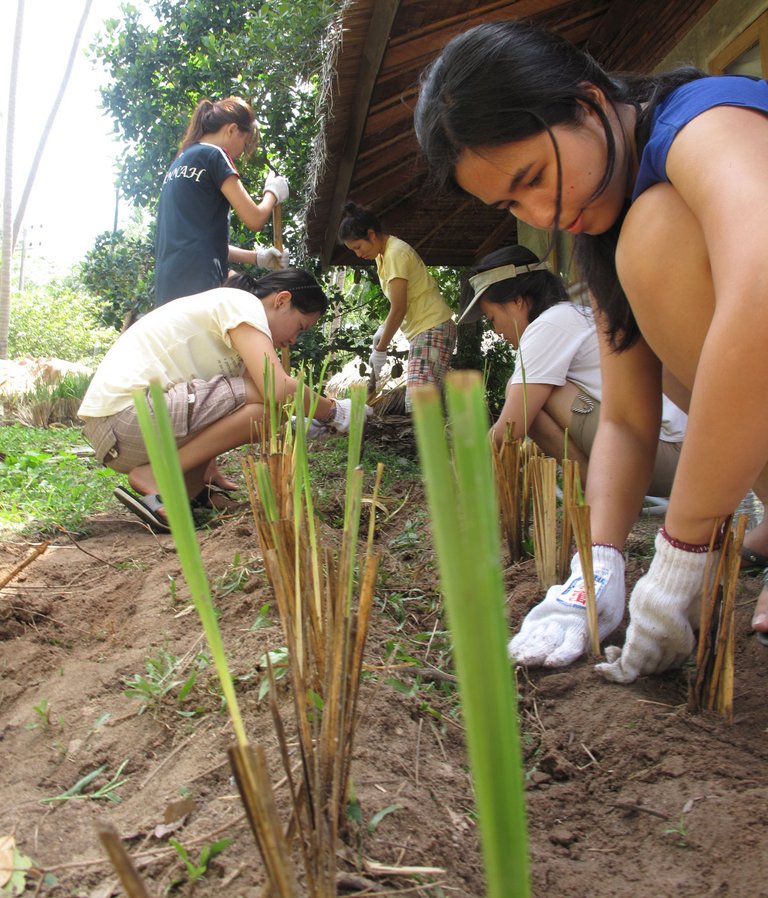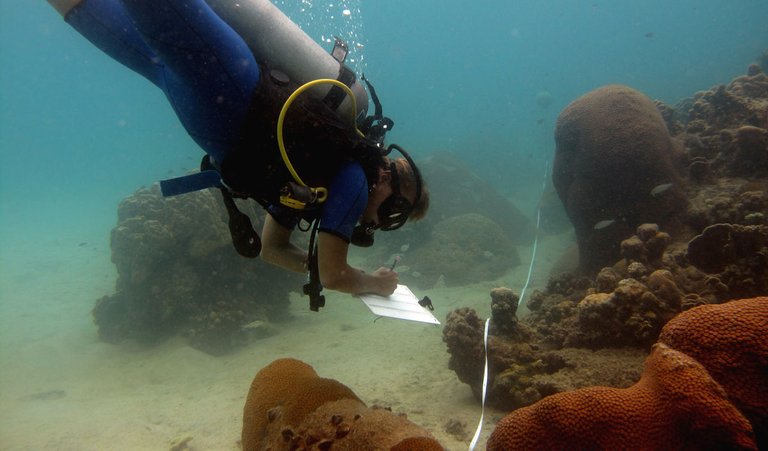 (c)Chad Scott
(c)Chad Scott
Volunteer placements, internships abroad, and international study programs in foreign countries are one of the most rewarding and life changing experiences a young traveler can involve in. In over 11 years of running volunteer and conservation programs for foreign students on Koh Tao, I have always strived to run a program which offers the best training and the best value possible. Mixed, of course, with a lot of fun and challenging activities. Almost all of my students leave here happy, informed, and wanting to do more.
Unfortunately, I have heard many terrible stories from them of going to other volunteer projects and finding out they were not what was advertised. In fact, each year we take on 2-3 last minute students who came to Asia to do a project at another location, and got there to find there was nothing for them to do or the project didn’t even exist.
When you are at home booking these types of volunteer placements you probably have a good idea of what you want to do, but maybe don’t know what to expect. There are currently so many projects available, with new ones springing up and old ones closing down all the time. Many programs out there are better at marketing than actually doing, and some websites or information may be outdated or inaccurate. That is why I have put together this list of things to consider before choosing a volunteer placement. By following this list of recommendations, I hope you will find the placement that will provide you the best possible trip and learning experience.

Volunteers plant vetiver grass on Koh Tao to control erosion. (c)Chad Scott
1. Review the website thoroughly
Take your time and research the projects well, this can be the difference between a positive life changing experience and an expensive waste of time. Don’t just believe the hype and appearance on the first page, make sure there is substance to their work. Many sites are misleading, or take information from other groups websites to appear to be doing a lot, when actually they are still starting up or don’t have regular projects going on. Do they post regular articles describing the work they have done, do they have stories about the outcomes of their projects and goals? How many years have they been in operation and what have they achieved during that time? Is the website current and updated regularly, or does it appear to have been neglected for a while? If they are science based, have they published any papers or reports, and do they provide access to those online?2. Find them on Facebook
Facebook is free, and any respectable volunteer program will have a facebook page. Again, you will want to see how regular the updates are, and what types of things they post. If the page only has memes, posts shared from other groups, or news articles then you can bet they don’t have any projects of their own actually going on. Look for projects that update their facebook regularly with pictures of activities actually going on at their location.3. Ask specific questions in the first email
When you write to a project inquiring about a placement, be sure to give some background about yourself and what you are looking for. You should avoid writing emails that just say something along the lines of “Hi I am interested in your programs, what will I do there?” Showing that you have informed yourself about the project already means that the person replying to your email can be more helpful to you, and also more interested in replying to you. If you write specific questions but receive back only a stock email then be weary. If they don’t have time to reply to some simple requests by email then how much time are they going to spend with your after you arrive? This is also a great time to ask them for info you couldn't find on the website, such as a list of accomplishments for the last year, or a list of upcoming projects.
A conservation student on Koh Tao performs weekly reef surveys as part of her internship placement. (c)Chad Scott
4. Contact previous volunteers or students
Another great reason to join their facebook page is that you can see who is tagged in the photos, and send them a message to see what they think about the program. You might have to message a few of them to get a reply, but generally at any good project the past volunteers and students should be more than willing to tell you to go and try it, as well as give you some details on what to expect.5. Check out third party sites and the projects partners
Just because a project has lots of partners doesn’t mean it will be a good one, but of course any project with a track record should have at least a few partners and maybe some booking organizations working with them. The booking organizations tend to be a great source of information about the programs, as it is in there interest to only promote good programs, and often they spend a lot of time vetting and choosing which programs to support and work with. If you are looking to find 3rd party websites to help locate the perfect project for you, I recommend the following sites, although there are many more out there:Personal Overseas Development (POD Volunteer)
Volunteer Work Thailand
Hivesters.com
Kaya Responsible Travel
Tourism Concern: Action for Ethical Tourism
Hopefully with these 5 easy tips in mind you will be better able to select the best place to do a volunteering holiday, internship, get work experience, or assist on some vital community projects.
Do you have experience with volunteer programs abroad? If you have any other tips or suggestions on how you made your choice please leave them in the comments section below.
Bonus tip: always ask to see pictures of your accommodation especially when it is included or free, sometimes things are free because they have little to no value 😊
Very nice
thank you